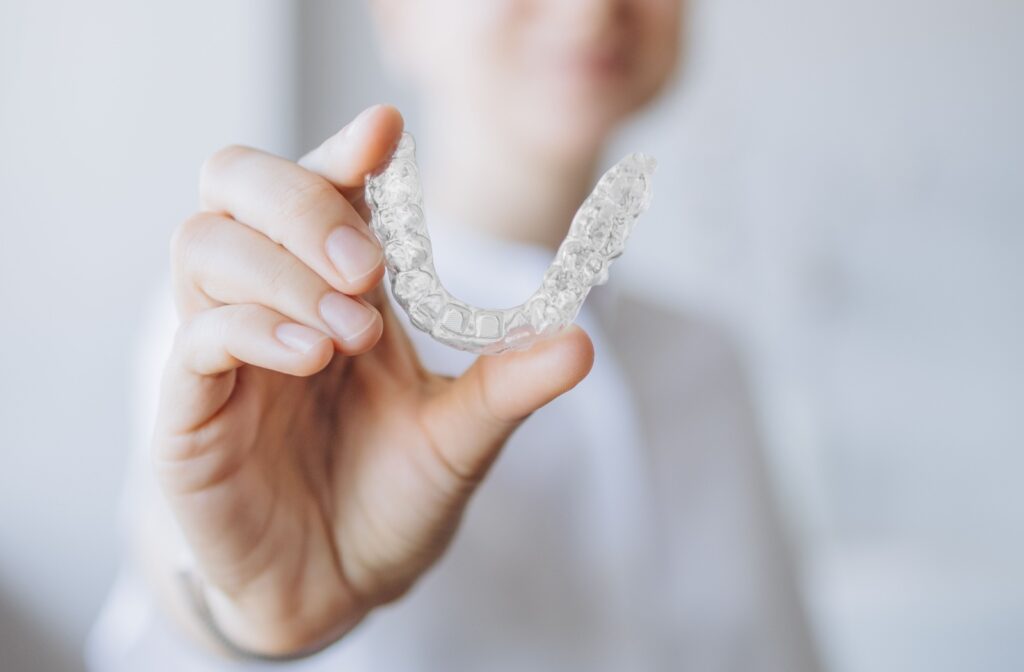When considering orthodontic treatments, the timeline is one of the most common questions patients have. Whether you’re an adult seeking the perfect smile or a parent exploring options for your child, it’s helpful to understand the commitment involved with braces or Invisalign.
Invisalign is often faster than braces, with an average treatment time of 6–18 months compared to 1.5–2 years for braces. Let’s break this down further to help you decide which treatment best fits you.
The Basics of Orthodontics
Orthodontic treatments can straighten teeth, improve alignment, and benefit overall oral health. Traditionally, braces have been the most reliable solution to correct various dental issues. However, technological advancements have introduced convenient options like Invisalign and other clear aligners, offering a less invasive and more discreet approach.
How Braces Work
Braces apply continuous pressure on all of your teeth using a combination of wires, brackets, and bands. Over time, this pressure shifts your teeth into the desired position.
While effective, braces come with certain limitations:
- They are fixed to your teeth, requiring professional adjustments every few weeks.
- They can make activities like eating, speaking, and brushing more challenging.
- Braces are bulky and often noticeable, which some may find uncomfortable or unappealing.
Braces, however, can be more effective for treating more complex orthodontic issues in some cases.
What Is Invisalign?
Unlike braces, Invisalign takes a completely different approach. This modern treatment uses clear, removable aligners custom-designed for your teeth. The aligners apply gentle pressure on individual teeth, guiding them into their ideal placement over time.
What can Invisalign treat?
- Crowded teeth
- Gaps or spacing
- Overbites and underbites
- Crossbites
- Minor misalignments
Who can Invisalign treat?
- Kids
- Teens
- Adults
- Seniors
The removable and discreet nature makes Invisalign appealing, particularly for adults and teenagers who prefer a subtle alternative to braces.
What to Expect During Invisalign Treatment
Your Initial Consultation
Your Invisalign process begins with a consultation at a dental clinic, like Genesis Dental. During this appointment:
- A dentist examines your teeth.
- Digital impressions are taken to create a 3D model of your mouth.
- A personalized treatment plan is developed based on your specific needs.
Ongoing Treatment
Once your custom aligners are ready, the treatment officially begins. Here’s what the process might involve:
- Wearing aligners: You’ll wear each set of aligners for 1–2 weeks before switching to the next set. Dentists recommend wearing them 22 hours per day, removing them only to eat, drink, brush, and floss.
- Progress tracking: You’ll visit your dentist every 6–8 weeks to monitor progress and receive your next set of aligners, or track progress via virtual monitoring.
- Gradual results: Minor changes are visible within weeks, while significant improvements occur over a few months.
Consistency in wearing your aligners plays a crucial role in achieving the expected results quickly and effectively.

How Long Does Invisalign Take?
Treatment duration is one of the most significant advantages of Invisalign. The process typically takes 6 to 18 months, depending on factors such as:
- The severity of the misalignment
- How well you follow the 22-hours-per-day guideline
- Additional dental conditions requiring attention
Braces, in contrast, usually take 12 months to 2 years, or longer for more complicated cases. Because the timeline is shorter and less invasive with Invisalign, many patients find it to be the more convenient option.
Benefits of Choosing Invisalign
Why are so many patients opting for Invisalign over traditional braces? Here are some standout benefits:
- No wires or metal brackets poking into your cheeks or gums.
- Easier to wear and remove as needed.
- Aligners are easier to clean, letting you maintain your standard oral hygiene routine.
- Eat and drink anything, including popcorn and gum, without worry—just pop your aligners back in afterward.
- Invisalign aligners are almost invisible, making them perfect for professionals or those who prefer a subtle look.
- Faster results for most cases compared to traditional braces.
While Invisalign is a good option for many, it’s not perfect for everyone. More serious misalignments or unique dental issues may still require traditional braces. An initial consultation with a dental professional is an important step to determine which course of action might be right for you.
Where to Get Invisalign
If Invisalign sounds like the right choice for you, it’s time to take the next step toward your dream smile. At Genesis Dental, we are here to help our patients achieve healthier, straighter teeth in a supportive and non-judgemental environment.
Our team will guide you from start to finish, customizing treatment to meet your needs. Connect with Genesis Dental to learn more about how Invisalign can help you achieve the smile you’ve always wanted.




